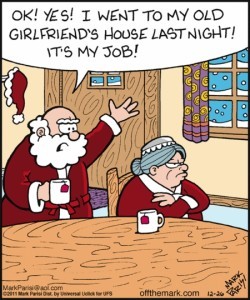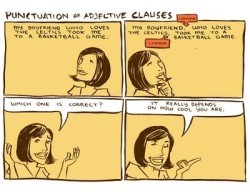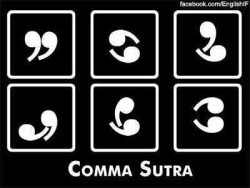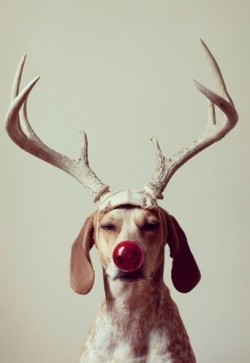Arlene Miller's Blog, page 54
December 31, 2015
The Grammarians’ New Year Resolutions for 2016
 Well, it has been two years since the last New Year Resolution Post. And we are probably still trying to lose weight, get to the gym more often, be a better parent or friend or spouse, stop smoking, write that book, start that new business, and on and on. Well, here are some grammar resolutions for 2016 — and no, they aren’t the same ones as two years ago!
Well, it has been two years since the last New Year Resolution Post. And we are probably still trying to lose weight, get to the gym more often, be a better parent or friend or spouse, stop smoking, write that book, start that new business, and on and on. Well, here are some grammar resolutions for 2016 — and no, they aren’t the same ones as two years ago!
1. I resolve never to correct anyone’s grammar—except in a published book or on TV or radio where the speaker is getting paid money to talk! Don’t correct your friends — even on Facebook — unless they specifically ask.
2. I resolve to form an opinion about the Oxford comma and to feel no guilt whether I want to use it or not. But please, be consistent in your use within the same piece of writing. Either use it or don’t — unless something would be unclear without it — or with it.
3. I resolve to not even think about separating two sentences with a comma unless there is a conjunction (like and, but, or so) present. A comma alone cannot separate two complete sentences. Try a semicolon or a period.
4. I resolve to learn the forms of the darn verb “to lie”: to realize that it is so confusing because lay is the past tense of lie, in addition to being it own present tense verb — and that lain really is a word.
5. I resolve to never use its’, because someone made it up. With all the confusion between its and it’s, the last thing we need is a third option! By the way, please also avoid on accident. It is by accident — but on purpose. And while we are at it, it’s not a whole nother story; it’s a whole other story. Or another whole story.
6. I resolve to pronounce the word mischievous correctly. The accent is on the first syllable (mis), and the last syllable is pronounced vus, not vius.
7. I resolve to learn how to spell out BBQ, and to realize that there is no Q in it at all (barbecue). And there is no ham in hamburger. . .
8. I resolve to eliminate or limit my use of a lot — and to always use it as two separate words.
9. I resolve not to put an s on toward (British use towards; American English uses toward, although no big deal). Also it is in regard to, not in regards to. And there is no such word as anyways — it is anyway.
10. I resolve to understand that good grammar improves my communication skills and the image I project to others. However, it isn’t everything. And if I can’t figure something out, thee is always a good grammar book around –speaking of which . . .
If you have purchased one or more of my books this past year, thank you so much! And I always appreciate a review on Amazon or elsewhere. And I do plan more books for 2016!
Happy New Year from The Grammar Diva!
December 23, 2015
Happy Holidays from The Grammar Diva
from
The Grammar Diva!
We will be back next week with the annual Grammarians’ New Year Resolutions.
December 15, 2015
So You Want To Be Santa? Our Annual Christmas Post
 Perhaps you have always wanted to get paid to be Santa. Well, it is a little late to find one of those plum jobs this year, but here is some information you might want to know for next year.
Perhaps you have always wanted to get paid to be Santa. Well, it is a little late to find one of those plum jobs this year, but here is some information you might want to know for next year.
The pay isn’t great. The going rate for Santa is about $10 or $12 per hour — unless you are a Santa who is hired out for private parties, in which case you might make about $18 per hour.
Here are some requirements and information for would-be Santas from real Santa want ads. My comments are in italics and parentheses. I have printed the important information in boldface:
1.Real bearded Santa Claus for our mall location (is that a real Santa or a real beard???). Must be able to stay in character and be great with children and families. Provide the full Christmas and Santa experience to guests. Financially rewarding and incredibly emotionally rewarding! We provide a competitive salary with bonus incentives. All applicants must pass a national background check.
—————————–
2. Actors to portray Santa Claus at a local store. We will provide a custom-made Santa suit; you must bring the jolly appearance and experience for the part. You must be customer-service orientated and truly enjoy working with children. You must possess a true care and concern for fulfilling the Christmas dream for thousands of children.
Previous experience as Santa
Possess a jolly personality and laugh
Must be able to attend training classes
Ability to meet a high volume of children
Must be able to pass a drug test
Must pass a background check
—————————-
3. Santa Claus to engage patrons into conversation. Meet and greet customers interested in communicating and taking photographic picture with Santa Claus. (Is there another kind of photo?)
Duties and Responsibilities:
Regularly communicates with patrons as they approach to talk and/or prepare for photos.
In a jovial manner engages customers in conversation for purposes of relaxing children to take photo (picture) with Santa (in case you don’t know that a photo IS a picture!).
High degree of professionalism, both visually and verbally, which exceeds customer expectations at all times when speaking to customers (adults and children).
Adheres to uniform standards by wearing Santa Claus costume at all times when greeting and meeting customers.
Exercises tact, good manners, and courtesy when interacting and assisting customers and fellow associates.
Job requires long hours in sedentary position, and lifting of children to place upon lap while communicating and/or preparing for photographic picture. (Photographic picture? Do they mean pornographic??)
Performs other related duties as assigned. (Cleaning the bathrooms??)
———————————
4. Historic Hotel is now hiring for a part-time Santa Claus.
POSITION SUMMARY:
Meet and greet children and their families dining at the Sunday Musical brunch.
SKILLS REQUIRED TO PERFORM ESSENTIAL DUTIES:
Strong customer service orientation
Strong listening skills and patience
Ability to deal well with people in a professional and courteous manner
Excellent phone skills (Are we calling Santa too?)
Proficiency in Open Table software (making dinner reservations?)
QUALIFICATIONS:
Must be 18 years of age or older. Must have a high school diploma or equivalent. Must be able to communicate effectively, both verbally and written, in English. Proficiency in Open Table is a must. Excellent hospitality skills. Self-motivated with excellent organizational skills and attention to detail. Ability to work a flexible schedule including extended hours, weekends and holidays.
PHYSICAL REQUIREMENTS:
Applicants must have the physical capability to lift, push or pull at least 30-50 pounds. Also, applicants must have the ability to use abdominal and back muscles and be able to stand for the duration of the shift. Must also have the ability to make fast, simple, repeated movements of the fingers, hands, and wrists, and to reach and stretch, bend, kneel and squat. (Is Santa going to dance?)
There will be a pre-employment drug screen, physical, and a nationwide criminal background check. Previous employment will be verified and references will be thoroughly checked.
Competitive wages based on experience and great work environment. Experience: Professional Santa Claus for 1 year
———————————–
5. Mall seeking an outgoing, jolly individual(s) to be Santa Claus for the 2015 Holiday Season! No Experience Necessary and Santa Suit Provided.
———————————–
6. This is a sales position for Santa Claus photos with children.
Employee will be required to show photos to parents, help them choose, make the sale and print the photos.
Applicant should be:
Friendly, reliable and have basic computer skills (iMac).
Salary: $12.00 /hour
————————————————–
If you read this blog regularly, you know I have a fondness for phobias. They are entertaining and unusual. Here are some phobias that, if you have them, might ruin your holiday season:
fear of alcohol – methyphobia
fear of anything new – neophobia
fear of the color red – erythrophobia
fear of church – ecclesiophobia
fear of cooking – mageirocophobia
fear of dolls – pediophobia
fear of eating – phagophobia
fear of food – cibophobia
fear of holy things – hagiophobia
fear of home – ecophobia
fear of ice or frost – pagophobia
fear of kissing – philemaphobia (watch the mistletoe!)
fear of laughter – geliophobia
fear of light – photophobia
fear of memories – mnemophobia
fear of religion – theophobia
fear of snow – chionophobia
The Grammar Diva Blog may take Christmas off. Or maybe there will be a lighthearted post….then, we will have the new Grammarians’ New Year Resolutions post, after which the comma series will resume.
Happy Holidays from The Grammar Diva!
December 11, 2015
Commas Part 8: Adverb and Noun Clauses
Santa Clauses!
My previous post talked about using commas around adjective clauses. Today we discuss using commas with adverb and noun clauses.
Adverb clauses (clause = a group of words containing a subject and a verb, but not always a sentence) act as adverbs in a sentence, usually modifying the verb in the sentence. Noun clauses serve as nouns in a sentence, functioning, like nouns, as subjects or objects.
Let’s talk about adverb clauses first. Adverb clauses can begin a sentence, end a sentence, or sometimes be in the middle of a sentence. Adverb clauses begin with words like this: because, although, if, since, whenever, when, wherever, before, and after (called subordinating conjunctions if you wanted to know!).
Here are some sentences that begin with adverb clauses. Always use a comma after adverb clauses that begin a sentence. Remember the rules about introductory elements? Well, actually these are introductory elements.
Because I won’t be home next weekend , I can’t make it to your party.
Although I love this flooring, I just cannot afford it.
If you wait here a few minutes, I can come with you.
Since I can’t be there on the holidays, we can meet after the new year.
Whenever I eat chocolate, I am happy.
When I see my family, I am always grateful.
Wherever you go, I will follow.
Before you leave for your vacation, make sure you have enough cash.
After we get home from the game, we will have dinner.
Careful with before, after, and since. They can also be used as prepositions. If you don’t see a verb with them, they are not being used in a clause. They are being used in a prepositional phrase, and you probably don’t need to follow them with a comma:
Since last Tuesday I have walked fifty miles.
Before the game you should warm up.
After midnight Santa will come!
Notice that in all the examples of introductory adverb clauses above, you can flip the sentence around. When you flip it around, you usually do NOT need a comma before the clause. If you really would pause, and the information is really additional information, you can use a comma. Because is never preceded by a comma.
I can’t make it to your party because I won’t be home next weekend .
I just can’t afford this flooring, although I love it . (I would use a comma here; it is additional information.)
I can come with you if you wait here a few minutes.
We can meet after the new year since I can’t be here for the holidays.
I am happy whenever I eat chocolate.
I m always grateful when I see my family.
I will follow wherever you go.
Be sure you have enough cash before you leave for your vacation.
We will have dinner after we get home from the game.
You can see that the clause is necessary for the complete meaning of the sentences except for the sentence with although. Therefore, do not use a comma.
Noun clauses are generally followed by commas when they begin a sentence because they cause the sentence to have an unusual word order. Sentences with unusual word order often have commas to make them clearer. Here are some examples:
Whatever you want , I don’t think I have. (“Normal” word order would be, I don’t think I have whatever you want)
Whoever you are , you should leave this instant.
Whatever this is , I don’t know to work it.
Whom you are pretending to be, I don’t know.
It is perfectly fine to write a sentence with unusual order. Sometimes sentences are written this way for effect.
——————————————————————————-
Happy Chanukah from The Grammar Diva!
Still looking for that perfect gift for the person who has everything?
Next week – The annual Christmas post (or should I say holiday post??)
December 4, 2015
Commas Part 7: Adjective Clauses
 We have discussed setting off interrupting words and phrases with commas. Today, we will talk about when to set off adjective clauses with commas — and when not to.
We have discussed setting off interrupting words and phrases with commas. Today, we will talk about when to set off adjective clauses with commas — and when not to.
First, what is a clause? A clause is a group of words, sort of like a phrase, but a clause has a subject and a verb. In fact, independent clauses are simple sentences, so we won’t be talking about those because sentences don’t interrupt other sentences. However, dependent, or subordinate, clauses are not complete sentences. There are a few different types of dependent clauses; today we are talking about adjective clauses.
What is an adjective clauses? Well, it isn’t called an adjective clause because it contains an adjective, although it can. It is called an adjective clause because the entire clause acts like an adjective, modifying a noun (or sometimes a pronoun). Adjective clauses never begin sentences. They are either in the middle or at the end of a sentence.
All adjective clauses begin with one of the following five words: which, that, who, whom, or whose. Here are examples of sentences using each of these words to begin an adjective clause:
The cookies on the table, which are slightly burned, are for the bake sale. (subject: which/verb: are/modifies: cookies on the table)
The cookies that are on the table are for the bake sale. (subject: that/verb: are/ modifies: cookies)
The girl who is at the end of the line is my cousin. (subject: who/ verb:is/modifies: girl)
The teachers whom I remember best were the stricter ones. (subject:I/verb: remember/modifies: teachers )
That tall kid, whose name is similar to mine, is in all my classes. (subject: name/verb: is/modifies: kid)
In all of the above examples, the clause is interrupting the sentence. (If you leave out the clause, you still have a complete sentence.) However, the clause can end the sentence, as in these examples:
Those are the cookies that I baked last night.
That is the girl whom I am asking to the prom.
This is my favorite book, which I have read six times!
Notice that in some of the sentences the clause is set off with commas, and in others it is not. The “rule”
is the same as for interrupting phrases. If you need the clause to define what you are talking about, you do not use commas. If the clause is additional information, or a “by the way,” use commas. Sometimes you can also put the clause in parentheses or even enclose it in dashes instead of using a comma . . . but this post is about commas.
Clauses that are necessary for the meaning of the sentence are called restrictive. They restrict the noun being described, so the reader knows which one. Restrictive clauses are not set off with commas. Clauses that add information that is not really necessary for the meaning of the sentence are called nonrestrictive. They don’t serve to limit the noun they modify; use commas around them.
Look at the first five examples above. In the first sentence we already know the sentence is about the cookies on the table and that they are for the bake sale, The fact that they are burned is additional information. In the second sentence we need the clause to tell us which cookies the sentence is talking about — the cookies on the table.
In the third sentence, we wouldn’t know which girl was your cousin without the clause that tells us which girl — the girl at the end of the line. In the fourth sentence, which teachers were the stricter ones? The ones you remember best.
In the last example, you identify that tall kid, so the reader knows whom you are talking about. The fact that his or her name is similar to yours is additional information.
Can you use pausing as a clue? If you would pause, use commas; if you wouldn’t pause, don’t use a comma. This technique is pretty accurate most of the time, but it is best to know the WHY.
Why use a clause at all? Why not just say “The girl at the end of the line is my cousin”? You can. I am not telling you how to write, or whether to use a phrase or a clause. But when you use a clause, know when to use commas and when not to.
Finally, when do you use which? that? who? whom? whose?
Which is used for things, not people, and usually in nonrestrictive clauses (with commas).
That is used for things and usually in restrictive clauses (without commas).
Who is used for people and is the subject of the clause.
Whom is used for people and is the object in a clause.
Whose is used for people and is possessive.
Who, whom, and whose are used for both restrictive and nonrestrictive clauses.
Sometimes you can use that for people, especially for groups of people: That is the tribe that lives in North Dakota.
———————————————————
What’s new with the Grammar Diva?
Here is my interview on BlogTalk radio with Sharon Michaels.
Here in my interview on KRCB’s A Novel Idea.
My books are for sale — along with other books by local authors and beautiful works of art– at the Healdsburg Center for the Arts Holiday Gift Gallery, 130 Plaza Street in Healdsburg.
I will be on the panel discussing all kinds of editing and its important at the December meeting of the Bay Area Independent Publishing Association.
Fifty Shades of Grammar: Scintillating and Saucy Sentences, Syntax, and Semantics from The Grammar Diva is now available! Makes a great gift!
November 26, 2015
Commas Part 6: Interrupting Phrases
 The turkey is almost gone, the stuffing a memory . . . time to resume talking about commas! Last time we talked about commas, we talked about using them to set off words that interrupted a sentence. Today, the topic is phrases that interrupt a sentence and when you use commas . . . and when you don’t.
The turkey is almost gone, the stuffing a memory . . . time to resume talking about commas! Last time we talked about commas, we talked about using them to set off words that interrupted a sentence. Today, the topic is phrases that interrupt a sentence and when you use commas . . . and when you don’t.
A phrase is a small group of words that belong together. They do not make a sentence. We will talk about using commas to set off these types of phrases: idiomatic, appositives, prepositional, and participial.
Idiomatic phrase – I know, by the way, where you were last night.
Appositive phrase – Dr. Caprone, my next door neighbor, is out of town for the summer.
Prepositional phrase – The cat in the window is very cute.
Participial phrase – The man, chasing his dog down the street, was unable to catch the dog until they had run five blocks.
Idiomatic phrases – Idioms are common sayings. Here are some phrases that are idioms: for example, in my opinion, by the way, as you know (which is actually a clause, but still an idiom). You would generally set these off in commas when they are in the middle of a sentence (and use a comma before them if they end the sentence).
This dress, in my opinion, is better made than the other one.
That movie, by the way, won nine Academy Awards.
This test, as you know, counts for half your grade.
Appositive phrases – An appositive phrase generally describes a noun that comes right before it. An appositive phrase usually is set off in commas. As we said in the post that talked about interrupted words, a single word used as appositive is not always set in commas.
Mr. Jamison, my math teacher, is really tough.
My sister, a student at Boston University, is coming home for the holidays.
The lead in the play, the girl with the bright red hair, is very talented.
My brother Edward is the tallest member of the family. (If you have more than one brother, you need to identify which one, so Edward is necessary and is not set off.)
Prepositional phrases – Prepositional phrases tell where, when, or what kind and are made up of a preposition, sometimes an article, and then a noun or pronoun. Like an appositive phrases, a prepositional phrase often describes a noun that comes before it. You don’t use commas around prepositional phrases as a rule:
The cat with the white spots is my newest pet.
That blue suit in the window is the one we have chosen for the groom.
The book on the table is due at the library.
Participial phrases – These phrases also describe a noun or pronoun in the sentence. They consist of a participle (a word that looks like a verb with an -ing ending or a past tense form) and words that go with it. Sometimes you set such a phrase off with commas and other times you don’t. It depends on whether or not the phrase is necessary to identify the noun it describes. Here are some examples.
The boy running faster than the rest of the crowd is my classmate. (Which boy? If you need the phrase to identify him, do not use commas.)
My mother, carefully putting on her makeup, is getting ready for a wedding. (You don’t need the phrase to identify your mother.)
This game, missing some pieces, isn’t able to be played any more.
That cat, sitting in the middle of the street, is in a dangerous spot.
The cat sitting in the middle of the street belongs to my neighbor.
Can you go by the old rule of using commas when you would pause? Yes, that method of deciding actually works much of the time with these phrases. There is sometimes a fine line between using a comma and not — and it seems that it could go either way. Do the best you can in these cases. Grammar and punctuation is more of an art than a science!
Next week we will talk about adjective phrases and commas. I bet you can’t wait!
Fifty Shades of Grammar: Scintillating and Saucy Sentences, Syntax, and Semantics is now available. You can find it on Amazon and all other online retailers. Bookstores can order it from Ingram. You can also order it from your favorite brick and mortar bookstore, and Copperfields bookstores in Sonoma County will likely stock it — Petaluma definitely will.
Thank you for making The Best Grammar Workbook Ever an Amazon bestseller. I hope this book can follow in its footsteps.
Fifty Shades of Grammar is a collection of fifty of my blog posts. It is divided into eight sections: grammar, punctuation, words, writing, holidays, quizzes, random topics, and the “fifty shades” series of posts. Here are just some of the post titles included:
Don’t Dangle Your Participles!
Which. That. Who, Help!
A Toast to the Semicolon
Apostrophe Catastrophes
Can You Spell These Words?
There Is Nothing to Fear
Five Tips for Great Writing: TOMAS
The Seven Deadly Sins of Writing
National Grammar Day Is March 4!
Some Real Grammar Turkeys: Happy Thanksgiving!
The Alien in Your Future (My Favorite Post)
People Say the Darndest Things
Fifty Shades of Grammar, Parts I, II, III, and Finale
Fifth Shades of Grammar would make a great holiday gift for your favorite word lover! Retail price is $15. It is 211 pages long.
I hope you all had a wonderful Thanksgiving, or at least a peaceful one.
November 19, 2015
Thanksgiving Chuckles
 I thought you might like a chuckle of two before Thanksgiving. I didn’t write these, and some may not be politically correct. Just saying . . . and we will get back to commas next week!
I thought you might like a chuckle of two before Thanksgiving. I didn’t write these, and some may not be politically correct. Just saying . . . and we will get back to commas next week!
Some Thanksgiving thoughts . . .
I celebrated Thanksgiving in an old-fashioned way. I invited everyone in my neighborhood to my house, we had an enormous feast, and then I killed them and took their land. Jon Stewart
Vegetables are a must on a diet. I suggest carrot cake, zucchini bread and pumpkin pie. Jim Davis
Thanksgiving is an emotional holiday. People travel thousands of miles to be with people they only see once a year. And then discover once a year is way too often. Johnny Carson
Thanksgiving Day, a function which originated in New England two or three centuries ago when those people recognized that they really had something to be thankful for — annually, not oftener — if they had succeeded in exterminating their neighbors, the Indians, during the previous twelve months instead of getting exterminated by their neighbors, the Indians. Mark Twain
Thanksgiving dinners take eighteen hours to prepare. They are consumed in twelve minutes. Half-times take twelve minutes. This is not coincidence. Erma Bombeck
An optimist is a person who starts a new diet on Thanksgiving Day. Irv Kupcine
I love Thanksgiving turkey . . . it’s the only time in Los Angeles that you see natural breasts. Arnold Schwarzenegger
The thing I’m most thankful for right now is elastic waistbands.Unknown Author
Most turkeys taste better the day after; my mother’s tasted better the day before. Rita Rudner
Here I am 5 o’clock in the morning stuffing bread crumbs up a dead bird’s butt. Roseanne Barr
Cooking Tip: Wrap turkey leftovers in aluminium foil and throw them out. Nicole Hollander
I come from a family where gravy is considered a beverage. Erma Bombeck
Some one-liners . . .
Why can’t you take a turkey to church? They use FOWL language.
Why was the Thanksgiving soup so expensive? It had 24 carrots.
What happened when the turkey got into a fight? He got the stuffing knocked out of him!
What do you get when you cross a turkey with a banjo? A turkey that can pluck itself!
Who doesn’t eat on Thanksgiving? A turkey because it is always stuffed.
Dear Turkeys, don’t worry… they only love us for our breasts too. Sincerely, women.
If the Pilgrims were alive today, what would they be most famous for? Their AGE.
Why do pilgrims pants keep falling down? Because their belt buckles are on their hats!
Why did they let the turkey join the band? Because he had the drumsticks.
What did the mother turkey say to her disobedient children? “If your father could see you now, he’d turn over in his gravy!”
What did the turkeys sing on Thanksgiving Day? God save the kin.
Which side of the turkey has the most feathers? The outside.
Why did the turkey cross the road? It was the chicken’s day off!
What do you call a pilgrims vocabulary? Pilgrammar. (UGH!)
How do Rednecks celebrate Thanksgiving? Pump kin!(double UGH!)
What do you get if you divide the circumference of a pumpkin by its diameter? Pumpkin pi.
And more chuckles . . .
My husband doesn’t think housework is a full-time job. So for Thanksgiving I served him a raw turkey because revenge is a dish best served cold.
If you didn’t want to sit at the kids’ table then you shouldn’t have seen the new Twilight movie.
I never understood why the Lions and Cowboys always get to play on Thanksgiving. Shouldn’t the Patriots play the Redskins, and then steal their stadium. (Ouch! I didn’t write these.)
If I was a turkey, I’d be doing everything I could to taste terrible right now.
On Thanksgiving Day, all over America, families sit down to dinner at the same moment . . . halftime. My aunt is bringing her homemade cranberry sauce to our Thanksgiving dinner, and my uncle is bringing his blatant racism!
Want to really freak someone out? Add 2 extra turkey legs to the turkey when it’s in the oven.
For the first time, we are going to have a HAPPY Thanksgiving. This year, I am stuffing the turkey with Prozac!
There is no sincerer love than the love of food. ~ George Bernard Shaw
Thanks to the following websites:
Happy Thanksgiving from The Grammar Diva to you and yours.
November 13, 2015
Commas Part 5: Interrupting Words
 In last week’s post, we talked about introductory words, phrases, and clauses that should be followed by commas at the start of a sentence. Well, the same types of things can be found in the middle of a sentence as well. In this post, we are going to talk about words that can come in the middle of the sentence and interrupt the sentence, so to speak. We will talk about phrases and clauses in the middle (and end) of sentences in the next posts.
In last week’s post, we talked about introductory words, phrases, and clauses that should be followed by commas at the start of a sentence. Well, the same types of things can be found in the middle of a sentence as well. In this post, we are going to talk about words that can come in the middle of the sentence and interrupt the sentence, so to speak. We will talk about phrases and clauses in the middle (and end) of sentences in the next posts.
Sometimes we put commas around interrupting words. And then, sometimes we don’t. The general rule is that if the word is added information and not necessary to the meaning of the sentence, use commas around it. Make sure you use two commas, one before and one after.
1.You don’t usually find transition words like first, next, last, and finally in the middle of a sentence, but you could. And when they are in the middle of a sentence, you generally would not use commas, because they are now adverbs or adjectives and not really transition words:
I next put the chocolate into the batter.
I see that you finally bought a new car.
The step that I would do last is making the frosting.
But in a compound sentence you might have a transition word “in the middle.”
I put the chocolate into the batter, and, finally, I made the frosting.
I put the chocolate into the batter, and finally I made the frosting.
That example above could go either way. The first sentence shows finally being used as a transition word. The second example, without the commas, seems to use finally as a simply adverb. Either way is fine.
2. However, however, often appears in the middle of a sentence. It generally is set off with commas.
I know, however, that it was you who stole the cookies! (You could write the same sentence with however at the beginning and just put a comma after it.)
I know you stole the cookies, however, and I am going to punish you. Also correct.
I know you stole the cookies, however, I will let you go this time! NOT correct.
Watch out with words like however and therefore. Look at the words before however in the third sentence above: they make a complete sentence. Now look at the words after however: they also make a complete sentence. There is no conjunction; however is not a conjunction that can connect two sentences. Neither is therefore. You need a conjunction, a semicolon, or a period before however, or you have a run-on sentence. Look at the correct examples with however: if you take however out, you have one sentence that makes sense. (for example, I know you stole the cookies, and I am going to punish you.)
3. You don’t usually find words like yes, no, well, or oh in the middle of a sentence. They are generally used at the beginning, so don’t worry about those. Well, I guess you could find yes or no.
I suppose, yes, you could do that.
I told her that no, she couldn’t go tonight.
4. You might have a name in the middle of a sentence. It could be direct address (calling someone by name – talking to them), in which case you would set the name off in commas.
I asked you, June, to clean up after yourself.
Do you think, Professor Jones, that I could have an extension on my thesis?
But what about this?
My brother John is visiting for Christmas.
Do you set off John with commas? It depends. What do you think the difference is between these two sentences?
My brother John is visiting for Christmas.
My brother, John, is visiting for Christmas.
In the first sentence John is necessary. You can’t leave it out, so it has no commas. Why can’t you leave it out? But in the second sentence, because John is set off with commas. It is not necessary; it is added information. Why?
The most obvious answer here is that in the first sentence you have more than one brother, so you need to identify him. In the second example, you have only one brother, so his name is additional information.
My wife, Nina, is cooking dinner for the entire family tonight.
Unless you are on Sister Wives, Nina is likely your only wife, so you can set her name off; it’s added information and not identifying which wife.
5. Occasionally you will have other types of words that need to be set of. You might have a participle or a one-word appositive.
A participle, if you remember, is an adjective, but it is made from a verb. Present participles are end in -ing and function as adjectives rather than as the verb in the sentence. Past participles have the same function, but end in -ed (or are created however the past tense of the particular verb is, for example, written, frozen).
An appositive is a word or phrase that describes a noun (or a pronoun) that comes right before it (for example, my brother, John).
Usually, participles that come after the noun they describe as well as appositives are set off with commas:
I set the gift, a sweater, on the chair.
She made cupcakes, chocolate, for the birthday party.
The dog, limping, seemed as if he was hurt.
You have probably heard the old “rule” about setting something off in commas if you would pause. That hint seems to work in this case.
I saw the dog limping down the street. But The dog, limping, ran down the street.
The pond, frozen, was still dangerous for skating. But you would likely say, The frozen pond was still dangerous for skating.
Yes, commas are confusing! If you are speaking, obviously it makes no difference. But when you write . . . .
6. Other random words are often used as interrupters as well as at the beginning sentences. Many times the commas are optional and depend on how you would say it. Would you pause?
I can indeed paint your portrait. Or I can, indeed, paint your portrait. Your choice.
They are, fortunately, safe and sound in their hotel room. or They are fortunately safe and sound in their hotel room. Your choice.
They are obviously the winners of the contest. Or They are, obviously, the winners of the contest. Your choice, but notice that in this case the commas around obviously actually emphasize it. Commas are sometimes used for that purpose. For emphasis, you could also put dashes around obviously here.
So finally, you get a choice in using commas! Next week, interrupting phrases.
Grammar Diva News:
Here is a link to my radio interview on KRCB’s A Novel Idea.
My interview on Blogtalk Radio will be aired on Sunday, November 22 at 2:30 p.m., and I will post the link as soon as I get it.
It looks as if Fifty Shades of Grammar will be available in a week or two. More later!
November 5, 2015
Commas Part 4: Introductory “Stuff”
Commas with Introductory Material
With this post we continue our series on using commas. In Parts 1 and 2, we talked about the Oxford, or series, comma. In Part 3, we talked about commas in compound sentences. Today, we are talking about putting commas after introductory words, phrases, and clauses in sentences, otherwise known as introductory “stuff”!!!
A common way to write a sentence is to start with the subject followed by the verb. However, if you write all your sentences this way, your writing will be boring. So we often begin a sentence with something other than the subject, and this other thing often is followed by a comma to ensure that the sentence is clear and easily readable.
Here are some samples of sentences that begin with the subject and verb:
I decided to travel across the United States later this year.
The committee and I think that the meeting should be rescheduled for later in the month.
The school is having an open house early next week.
Let’s look at those sentences with something added before the subject:
Finally, I decided to travel across the United States later this year. (word)
After our discussion the committee and I think the meeting should be rescheduled for later in the month. (phrase)
Because it is the beginning of a new academic year, the school is having an open house early next week. (clause)
So, when do we need a comma after an introductory word, phrase, or clause?
Word:
Generally, we put a comma after an introductory word. Here are some examples of introductory words:
Transition words like first, next, last, finally, however
Yes and no
Interjections like well and oh
A person’s name if you are talking to a person (known as direct address)
Random words like indeed, fortunately, and otherwise (sometimes)
Examples:
First, I would like to show this slide presentation.
Yes, I will go with you.
Well, I don’t think I can.
Mary, please clean your room.
Yes, Mary, I think you should apologize.
Fortunately, no one was hurt.
Indeed I think you should go! (If you really wouldn’t pause after a word like this, you don’t need to put a comma, but most of the time people seem to use the comma. It is fine to use it.)
Phrase:
Phrases a small groups of words that go together. There is usually a comma after an introductory phrase. It does depend upon the type of phrase, though.
Prepositional phrases are made up of a preposition, sometimes an article, and a noun or pronoun: down the stairs, in the house, along the path, at school, etc.If you have a short prepositional phrase at the beginning of the sentence, you really don’t need a comma. If you have a longer, ore involved prepositional phrase, or two of them in a row, use a comma. Here are some examples:
In Paris we saw the Eiffel Tower.
On top of the refrigerator, a mouse sat staring a me.
Down the stairs and out of the house, she ran.
Notice that after the phrase or phrases there is a subject. In the sentences above, the subjects are we, a mouse, and she. If there is a verb directly after the phrase, DO NOT use a comma because the phrase is serving as a subject or the sentence is simply in an unusual order.
On top of the refrigerator sat a mouse.
Down the stairs and out of the house ran the dog.
Participial phrases usually contain a verb, ending a –ing or –ed, that is being used to describe the subject that comes right after it. Use a comma after such a phrase (or even a lonely participle, like the middle example below) if the subject immediately follows.
Racing across the room, she almost fell on her face.
Sulking, the girl was being punished for her tantrum.
Sitting in a big, comfy chair, I was reading my book.
The subjects in those sentences immediately follow the participle or the participial phrase: she, the girl, and I. Once again, don’t put a comma if the phrase is followed by a verb (in which case it is probably another kind of phrase, but we don’t need to know what kind!)
Racing across the room is dangerous.
Sulking is not a good habit.
Reading in my big, comfy chair is my favorite thing to do on a rainy day.
So — if the words in the introductory phrase are followed by a verb and appear to be taking the place of the subject, don’t put a comma. But if the subject follows your phrase, use the comma.
Clause:
A clause is a group of words like a phrase, but one that contains both a subject and a verb and is generally longer than a phrase. A clause at the beginning of the sentence is followed by a comma — unless it is followed by a verb!
Most clauses that appear at the beginning of a sentence begin with words like because, although, if, when, whenever, after, before, since, wherever. Many times, these clauses make just as much sense at the end of the sentence, but usually we don’t use a comma when they are at the end (or middle). But that is another post.
Because I really want to play the piano, I am going to take lessons.
Although it is raining, I am going for a walk.
Wherever you go, I will follow.
Once again, in sentences where a verb follows the clause, the clause is being used as a subject and does not have a comma:
Where you are going is none of my business.
After I eat dinner is when I want dessert and coffee.
Most of the time you won’t find clauses used as subjects.
So, as a general rule, introductory information in a sentence is followed by a comma.The only time it is wrong to follow it with a comma is when the verb is next rather than the subject, because if the verb is next, the introductory words are likely being used as the subject — and we don’t put a comma between subject and verb!
*********************************************
Grammar Diva News:
50 Shades of Grammar: Scintillating and Saucy Sentences, Syntax, and Semantics from The Grammar Diva is currently at the designer’s house, and I am still hoping for a release at the beginning of December. Add it to your holiday gift-giving list.
I recently did two radio interviews, one on local public radio KRCB and the other on BlogTalk radio. The one on Blog Talk Radio will be aired on Sunday, November 22 at 2:30 p.m. PST. The KRCB has already been aired and the link here goes to the podcast.
My books may be for sale at the Healdsburg Holiday Gift Gallery. And even if they aren’t, other local authors and artists will be selling their fabulous wares!
I will be a panelist discussing editing at the December 12 meeting of BAIPA, the Bay Area Independent Publishers Association.
October 30, 2015
BOO! What Are YOU Afraid Of ????
Happy Halloween!
What are some of the spooky things you are afraid of? Well, here are some suggestions and the real names for them:
Achluophobia– Fear of darkness
Agrizoophobia- Fear of wild animals
Ailurophobia– Fear of cats
Arsonphobia– Fear of fire
Astraphobia or Astrapophobia– Fear of thunder and lightning
Atomosophobia- Fear of atomic explosions
Automatonophobia– Fear of ventriloquist’s dummies, animatronic creatures, wax statues – anything that falsely represents a sentient being
Ballistophobia– Fear of missiles or bullets
Bogyphobia- Fear of bogeys or the bogeyman
Chiroptophobia– Fear of bats
Coimetrophobia– Fear of cemeteries
Coulrophobia– Fear of clowns
Demonophobia or Daemonophobia- Fear of demons
Eisoptrophobia- Fear of mirrors or of seeing oneself in a mirror
Hadephobia- Fear of hell
Helminthophobia– Fear of being infested with worms.
Hemophobia or Hemaphobia or Hematophobia– Fear of blood
Herpetophobia– Fear of reptiles or creepy, crawly things
Hexakosioihexekontahexaphobia- Fear of the number 666
Iophobia– Fear of poison
Kosmikophobia– Fear of cosmic phenomenon
Lilapsophobia- Fear of tornadoes and hurricanes
Melanophobia– Fear of the color black
Merinthophobia– Fear of being bound or tied up
Necrophobia– Fear of death or dead things
Noctiphobia– Fear of the night
Nucleomituphobia– Fear of nuclear weapons
Nyctohylophobia- Fear of dark wooded areas or of forests at night
Ophidiophobia- Fear of snakes
Ornithophobia- Fear of birds
Paraskavedekatriaphobia- Fear of Friday the 13th
Phasmophobia– Fear of ghosts
Placophobia– Fear of tombstones
Pneumatiphobia– Fear of spirits
Pupaphobia – Fear of puppets
Samhainophobia: Fear of Halloween
Satanophobia– Fear of Satan
Scelerophibia– Fear of bad men, burglars
Sciophobia, Sciaphobia– Fear of shadows
Spectrophobia– Fear of specters or ghosts
Taphephobia, Taphophobia- Fear of being buried alive or of cemeteries
Triskaidekaphobia– Fear of the number 13
Wiccaphobia: Fear of witches and witchcraft
Happy and Safe Halloween from The Grammar Diva!
By the way – I will be a guest on A Novel Idea this Sunday at 7 p.m. on KCRB radio, 90.9 and 91.0 FM. We’ll be talking . . . grammar! What else!
SIGN UP to receive The Grammar Diva blog post by e-mail every week!

























